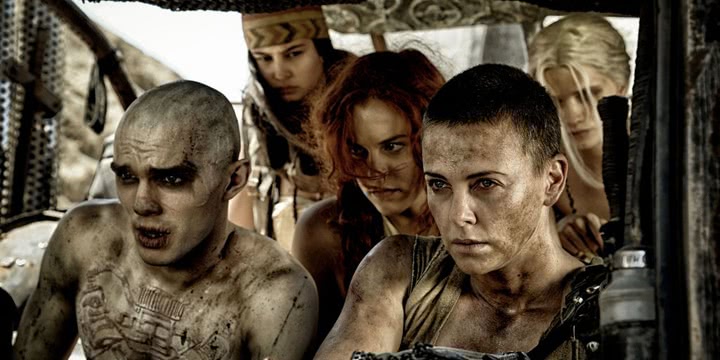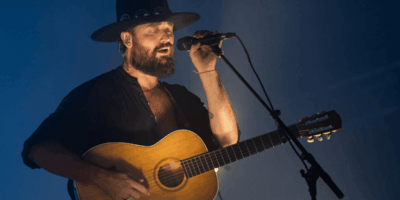The madness of Max Rockatansky’s world is not unfamiliar to Hugh Keays-Byrne; after all, this isn’t his first time facing off against the Road Warrior. It’s been 36 years since Toecutter ate bitumen, and yet Keays-Byrne has returned to the scorched landscape of post-apocalyptic Australia in Mad Max: Fury Road. This timehe portrays Immortan Joe, the dictatorial yin to Max’s yang.
“He’s not just a dictator, he’s a rebuilder,” Keays-Byrne is quick to assert. “He’s a Renaissance man; he’s trying to bring back a lot of beauty and culture to the world which has disintegrated around him. He’s trying to look after people – he has an outreach program, he goes out into the desert collecting boys and children and ‘blood bags’, and Mad Max [Tom Hardy] is a blood bag that escapes with a traitor.”
Max’s partnering with the ‘traitor’ Furiosa (Charlize Theron) drives the narrative of Fury Road as the Immortan and his War Boys pursue them through the desert in one explosive set piece after another.
“It was bliss,” Keays-Byrne croons in his urbane British accent. “It was bliss on wheels. It was like winning everything at once.”
Key to Keays-Byrne’s return to the Mad Max franchise was the actor’s relationship with director and creative mastermind George Miller. “Basically, we haven’t changed other than that we’ve aged 37 years,” he says. “We both think the same and George is a very open and interested director. He’s got a very broad intellect.”
Where the years have shown themselves is in the evolution of the industry and Miller’s own talents as a filmmaker. With its elaborate design and stunning, colour-drenched cinematography, the look and feel of Fury Road is a far cry from the series’ origins.
“It was George’s first and none of us had done a lot of stuff,” Keays-Byrne admits. “It was very scrubby; everyone shared rooms and we drove the bikes to work. On this [film] we’ve got the most modern equipment on the planet and a huge budget and a wonderful location, [but] it still had the same sense of darkness running through it, it still had the same sense of adventure, it still had the same vein of madness.”
A realisation dawns on him. “I think that must be in George Miller’s head as the actual creator of Mad Max, you know what I mean?” he laughs.
It seems apt given Miller’s choice of shooting location – a crew of hundreds took to Swakopmund on Namibia’s west coast to achieve his vision. “An extraordinary country,” Keays-Byrne says. “It can’t not affect you – it’s a very important part of the film.”
Equally vital was the relationships between the performers – so much so that Keays-Byrne would stage rallies with performer iOTA and the Immortan’s War Boys during rehearsal.
“They’re amazingly physically adept people, all of them. The Immortan is a god, and it’s only by [the War Boys] believing that that makes it true. I can’t be scarier than them, they make me scary.”
Keays-Byrne is equally complimentary of the “very powerful” performances of his colleagues, particularly his female co-stars. “They’re spectacular, aren’t they? The most beautiful women in the world!” he laughs. “A joy to behold.”
His pride is clear when he speaks of how Fury Road has come together, and of its relevance to today. “You can go to various parts of the world and it’s actually happening! There are warlords crashing about the hills and they’re chasing people, all of that’s happening,” he says.
He is careful, however, not to prescribe too much onto the film. “Like a good poem, it’s not really defined, is it – what people get from it.”
Mad Max: Fury Road (dir. George Miller) is in cinemas now.

































